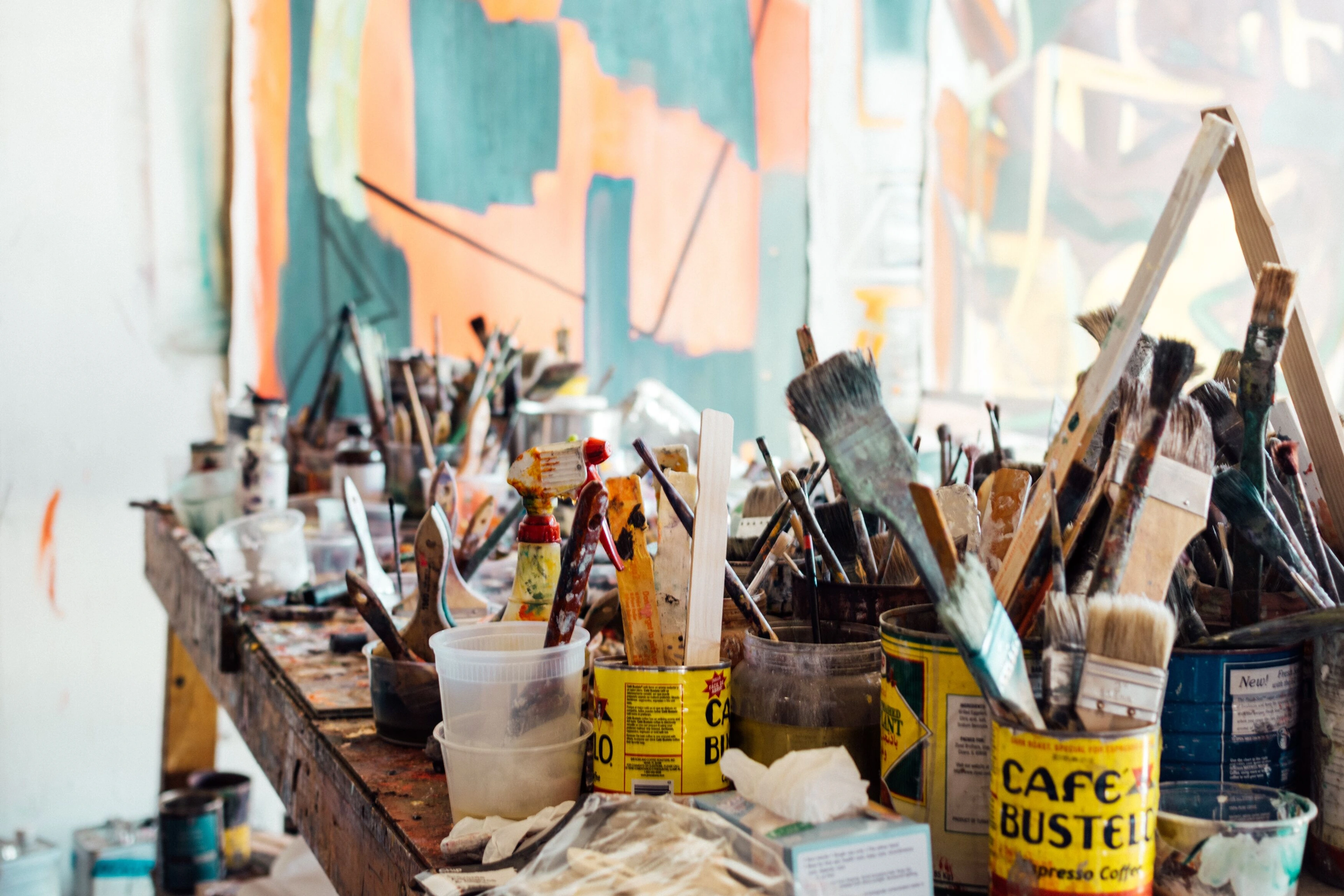
Understanding Art Prices: An Artist's Deep Dive into Value Factors & Market Mysteries
Ever felt art pricing is a mystery? An artist shares a deeply personal, engaging take on the complex factors influencing artwork value, from reputation and medium to market trends, commissions, and the true, personal connection you feel. Demystify art prices with an insider's view.
Understanding Art Prices: What Factors Determine an Artwork's Value?
Okay, let's talk about something that feels like one of the art world's biggest mysteries: pricing. I remember standing in front of my own early pieces, brush still sticky with paint, and thinking, "Right, so... what number goes here?" It felt utterly arbitrary, like pulling a figure out of thin air. How do you put a price tag on something that came from your gut, your heart, your late-night wrestling with a canvas? And then you look at other art, maybe something that seems simple to your eye, and it's priced at thousands, sometimes millions. What's that about? It can feel a bit like everyone else got a secret decoder ring, right?
You're not alone if you've felt this confusion. Art pricing can feel like an opaque system, understood only by those who've spent decades navigating galleries and auction houses. But while there's definitely no single, simple formula (oh, how I wish there were! My life would be so much easier!), there are absolutely key factors that consistently influence why an artwork is priced the way it is. Understanding these elements isn't just for collectors or investors; it can genuinely empower you as a buyer, helping you feel more confident and less mystified when you encounter a price tag. Think of it as getting a peek behind the curtain, or maybe just finding out the wizard is actually just a regular person pulling levers.
This guide is my attempt, from one side of the easel, to break down the crucial factors that contribute to an artwork's value and price. And remember, while market value is part of the equation, the most important value is always the one you find in a piece yourself. For general buying advice, see our Beginner's Guide to Buying Art.
Value: More Than Just a Price Tag
Before we dive into the nitty-gritty of market factors, let's get something straight, something I feel in my bones every time I finish a piece: the intrinsic value of art. This is the personal connection, the emotional resonance, the sheer joy or thought-provoking challenge a piece brings to you. This is paramount, especially when you're choosing art for your home, for your daily life. The market value is something else entirely – it's what the art world collectively agrees a piece is worth at a given moment, reflected in its price. While market factors heavily influence that price, they are just one lens, not the only one, and certainly not the most important one when you're buying something you love. Understanding the market side simply gives you context and confidence in navigating that system, so you can focus on finding pieces that speak to your soul.
Primary Market vs. Secondary Market Pricing: Where Does the Price Get Set?
Understanding the factors influencing art prices is clearer when you know where the art is being sold. It's not just one big market; there are distinct arenas, each with its own pricing dynamics. Think of it like buying a car new from the dealer versus buying it used. It's worth noting that for most contemporary artists, especially those emerging or mid-career, the primary market is where the vast majority of sales happen.
- Primary Market (First Sale): This is when you buy art directly from the artist or their representing gallery. Prices here are typically set by the gallery (in consultation with the artist), often based on a consistent formula considering size, medium, and the artist's current career level and market standing. This provides a degree of predictability. Pricing for many contemporary artists, including those featured at the Zen Museum Store, often follows this structure, aiming for consistency and fairness as the artist's career develops. It's the 'sticker price', set with intention.
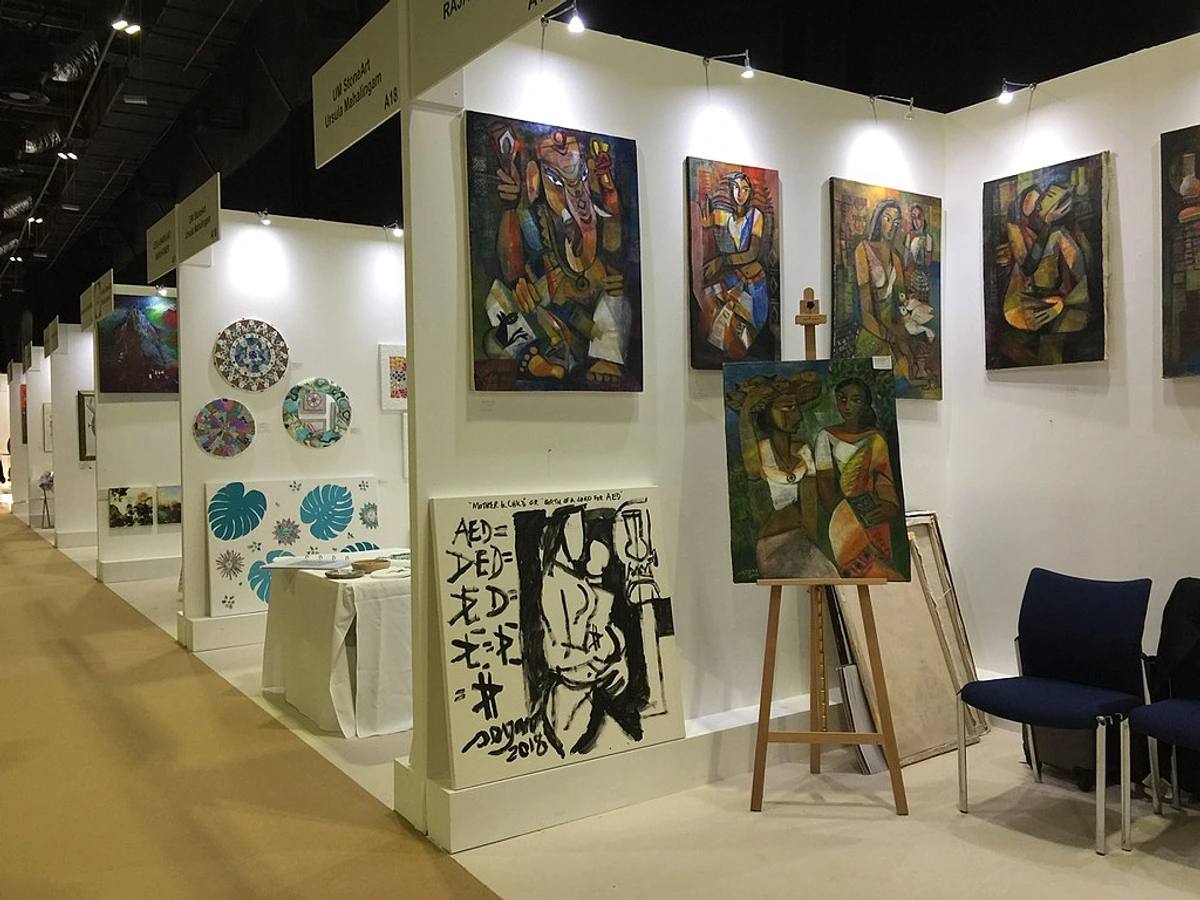
- Secondary Market (Resale): This is when art is sold after its initial purchase, usually through auction houses or private dealers. Prices here are much more fluid and determined by what the market is willing to pay at that specific moment. They are heavily influenced by recent auction results for similar works by the artist, the piece's provenance (including its exhibition history), and its condition (including conservation history). Prices can fluctuate significantly based on trends, demand, and even the specific sale venue. This is where you might see those headline-grabbing, sky-high prices, but also where prices can sometimes drop if demand cools. It's the 'resale value', driven by the current buzz. Learn more about Navigating the Secondary Art Market.
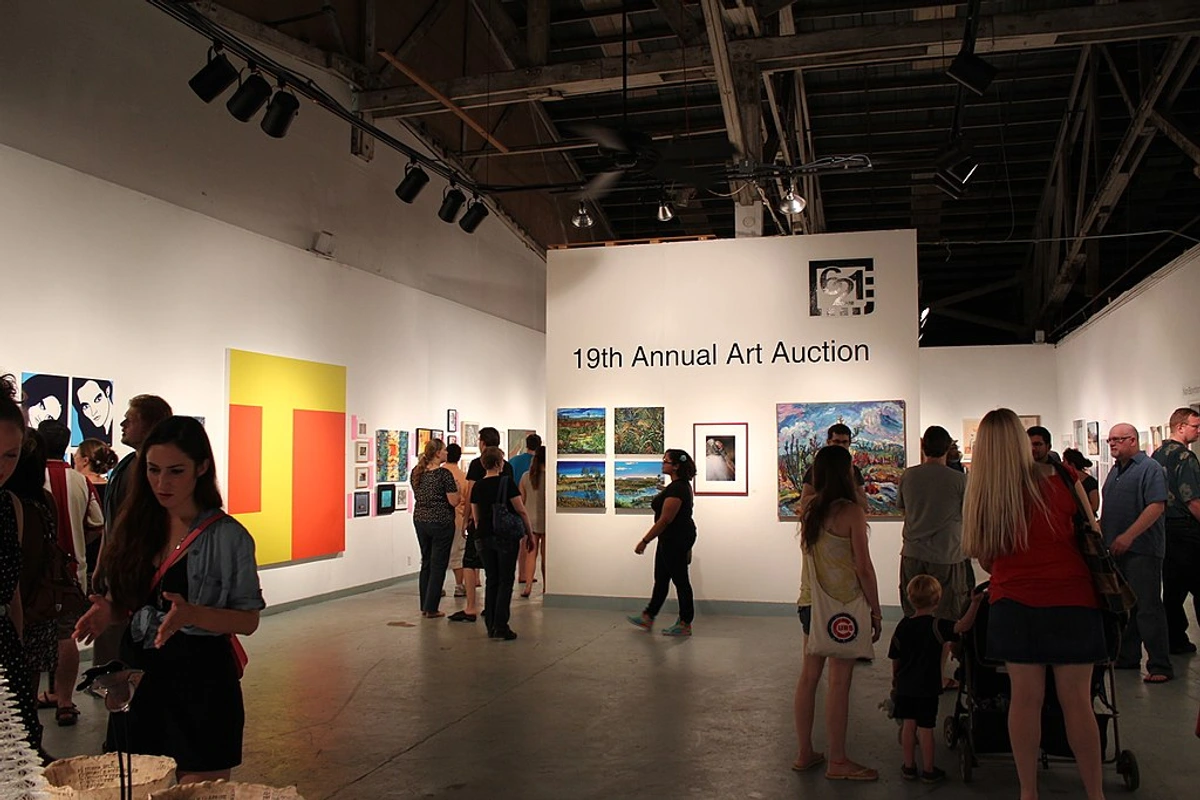
Key Factors Influencing Art Prices: The Artist, The Artwork, The Market
Art prices are determined by a complex, sometimes quirky, interplay of factors. It's like a recipe with many ingredients, and the proportions are always shifting. These factors generally fall into three main categories. Let's pull back the curtain a little further on each one.
To sum up these factors, you can think of them like this:
| Factor Category | Key Elements | Primary Impact Area | Personal Artist Thought (Optional!) |-| | :--------------------- | :---------------------------------------------------------------------------------------------------------- | :------------------------ | :---------------------------------------------------------------------------------------------------------------------------------------------------------------- |:|-| | Artist Factors | Reputation, Career Stage, Demand, Exhibition History, Story, Philosophy, Exclusivity, Social Media/Online Presence, Market Makers | Overall Price Level | "Am I charging enough to reflect the years I've put in, the emotional energy, and the market I'm building? It's a constant recalibration." | | | Artwork Factors | Medium, Size, Condition, Rarity, Provenance, Subject/Period, Signature, Materials, Historical Significance, Artwork Exhibition History, Conservation History, Digital Art/NFT specifics | Specific Piece Value | "This one took forever, used all the expensive paint, and was in that big museum show... yeah, this one's different." | | | Market Factors | Supply/Demand, Gallery Prestige, Auction Results, Trends, Economy, Fairs, Online, Art Consultants, Appraisals, Major Art World Events | Current Market Price | "Scrolling through gallery sites, trying to figure out if my prices are in the ballpark... it's like market research, but feels a bit like comparing apples and very expensive oranges." | |
These categories aren't isolated; they constantly interact. An emerging artist (Artist Factor) who creates a large, complex sculpture (Artwork Factor) that gets acquired by a major museum (Market Factor via institutional validation) will see their prices jump across all their work. It's a ripple effect.
(A) Artist-Related Factors
This is often the first place people look, and for good reason. Who made the art matters, not just because of their skill, but because of their standing in the art world. It's like knowing the chef behind the meal – sometimes that adds to the experience, and the price! Here's what goes into the artist's side of the equation:
- Artist's Reputation & Recognition: Is the artist just starting out, finding their voice (an emerging artist)? Are they hitting their stride with a solid body of work and growing attention (mid-career)? Or are they a household name with a long history (established)? An artist with a strong exhibition history at reputable galleries and museums, critical acclaim (reviews, academic papers), awards, or works in major public or private collections will generally command higher prices. Why? Because these things signal market confidence and validation. They show the artist isn't just making work in a vacuum; they're engaging with the broader art ecosystem. For me, getting into a specific gallery show felt less about the immediate sale and more about that validation – like, okay, maybe I'm not just making pretty pictures in my garage! It definitely makes you think differently about pricing future work. See our guide on Researching Artists and lists like Top Living Artists.
- Career Trajectory: Is the artist's career on an upward swing? Positive momentum – maybe they just got into a prestigious show, were featured in a major publication, or joined a well-regarded gallery – and perceived future potential can significantly increase demand and prices. It's like betting on a rising star. Or, from my side, it feels like finally getting some traction after years of pushing that boulder uphill! Learn about spotting emerging artists.
- Demand: This is simple economics, but in art, it's fueled by passion and buzz. If lots of collectors (whether private individuals, institutions, or corporations) want works by an artist whose output is limited, prices naturally go up. How does demand show itself? Think waiting lists for new pieces, works selling out quickly at shows or online, or collectors actively seeking out specific works from the artist's past. It's a lovely problem to have, but it does mean you have to adjust your pricing to reflect that reality.
- Artist's Story/Narrative: Beyond just their resume, the compelling story behind the artist or a specific body of work can add significant perceived value and demand. Maybe their work addresses a timely social issue, their personal journey is particularly inspiring (like many self-taught artists), or there's a fascinating anecdote tied to the creation of a piece. People connect with stories, and that connection can translate to value. I know my own journey, with its twists and turns (my timeline), definitely influences how people see my work, and sometimes, how they value it.
- Exclusivity and Availability: How easy is it to get a piece by this artist? If an artist is exclusively represented by a few top galleries, or if they only release work at specific times (like once a year for a solo show), this controlled supply can drive up demand and prices. It's not just about how much work they make, but how and where it enters the market. Think of it like limited-edition sneakers – the scarcity is part of the appeal and the price tag.
- Social Media and Online Presence: In today's world, an artist's visibility online can significantly impact their market. A strong social media following, an engaging website, and active participation in online platforms can build a direct connection with potential buyers and collectors, generating buzz and demand independently of traditional gallery representation. It's a powerful tool for building reputation and reaching a global audience, which in turn can influence pricing.
- Market Makers: While not strictly an artist factor, the influence of key players like major collectors, influential art dealers, and prestigious institutions (museums acquiring work) can significantly validate an artist's market. When a well-known collector buys a piece, or a major museum acquires a work for its permanent collection, it sends a strong signal to the market, boosting the artist's credibility and often leading to increased demand and prices. It's like getting a stamp of approval from the art world's inner circle.
Artist's Pricing Philosophy: A Personal Deep Dive
Since you're here, you might wonder how I approach this puzzle. My own philosophy involves a blend of the practical and the less tangible. It starts with the basics: literally calculating the cost of materials (those big canvases and fancy pigments aren't cheap! I mean, have you seen the price of a really good tube of cadmium red lately? It adds up!). Then I factor in the time spent, which is tricky – is it just the hours at the easel, or the years of learning and experimenting that got me here? How do you put a number on the emotional labor – the wrestling with ideas, the failures, the breakthroughs? It's hard, but it's part of the value.
One common starting point, especially for paintings, is a price-per-square-inch formula. You might see artists or galleries use this as a baseline (e.g., $5-$10 per square inch for an emerging artist, much higher for established ones). So, a 12x12 inch painting might start around $720 - $1440 based on that formula. But this is only a starting point. It doesn't account for complexity, historical significance, or that intangible 'magic' in a piece. A highly detailed small work might take longer and be more impactful than a large, simple one. So, while it's a useful tool for consistency, it's rarely the final word.
I also look at where I am in my career, comparing my work to artists at a similar stage with similar exhibition histories and market presence. If I work with a gallery, we discuss pricing together, aligning it with their market knowledge and the prices of other artists they represent. This partnership is invaluable – they have the expertise, the space, and the network that allows me to focus on making the work. The commission they take (often around 50% on primary market sales) isn't usually 'added' on top; the listed price is set to cover both my share and their costs for marketing, sales, and overhead. It's part of the cost of doing business in that market.
As my career progresses, prices naturally evolve, reflecting increased demand, more significant exhibitions, and the growing body of work. Balancing the desire for my work to be accessible to people who genuinely connect with it with the need to value my time, skill, and place in the market is perhaps the biggest challenge. It never feels perfectly simple. It's a constant learning process, a mix of spreadsheets, gut feeling, and conversations with people who understand the market.
(B) Artwork-Specific Factors
Once you know about the artist, you look at the piece itself. What is it made of? How big is it? Does it have a history? These are the tangible (and sometimes intangible) details of the artwork itself. Here's what makes an individual piece unique in terms of value:
- Medium: The materials used definitely matter, though maybe not always in the traditional ways anymore. Generally, original paintings (especially oil or acrylic on canvas) have historically cost more than works on paper (watercolors, drawings) or limited edition prints by the same artist. Sculptures vary hugely based on material (bronze is costly and labor-intensive; ceramic or wood might be less so). But contemporary artists are constantly challenging these hierarchies! Mixed media pieces, digital art, or works using unconventional materials can command high prices based on concept, execution, and the artist's reputation. And yes, the actual cost of materials themselves is a factor, especially for large or complex works. Compare Prints vs. Paintings and learn about Understanding Limited Edition Prints. It's funny, sometimes the simplest-looking piece used the most expensive pigments or required a custom-built support. You just never know! I remember agonizing over the price of a specific shade of blue pigment once – it felt like painting with liquid gold! That cost has to factor in somewhere.
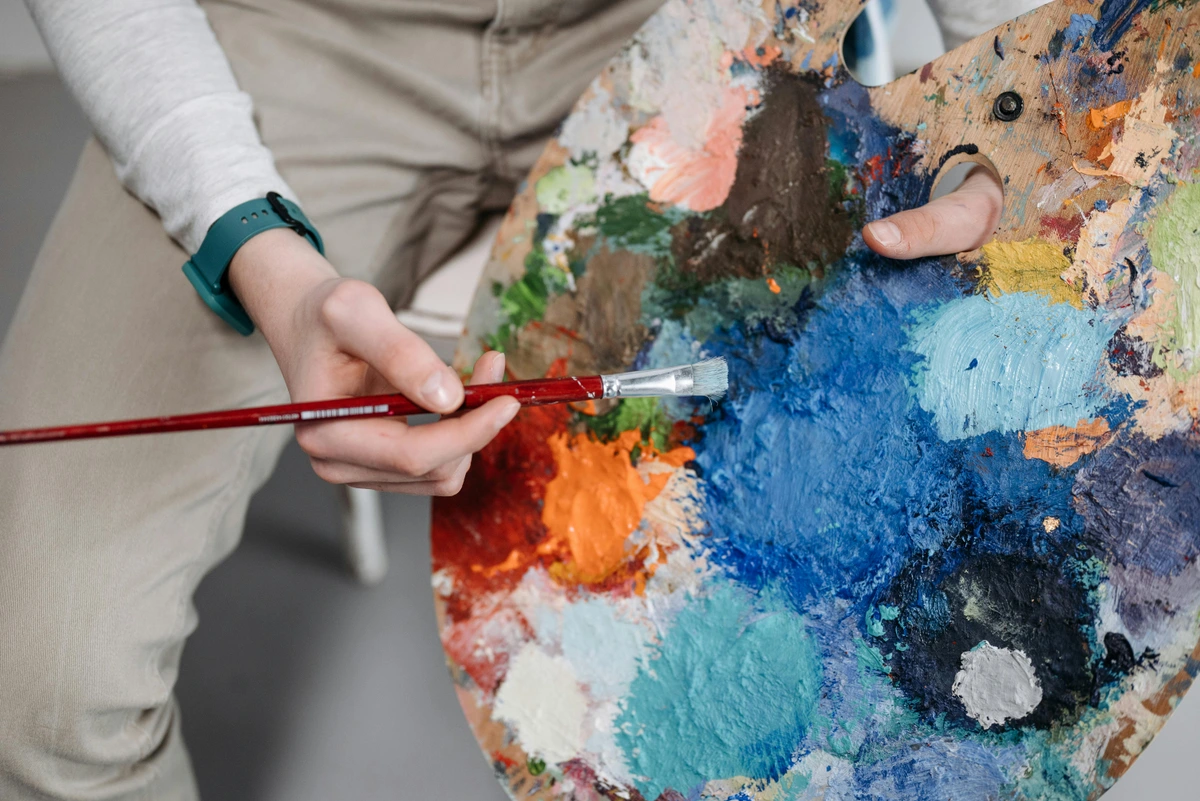
- Size & Scale: Larger works typically require more materials, more time, and more studio space (which costs money!). This often results in higher prices, though price doesn't always scale perfectly proportionally with size. Sometimes a small, incredibly powerful piece can be worth more than a large, less successful one. It's not just about square footage; it's about impact. Creating a massive piece is a completely different physical and logistical challenge than a small one – hauling canvases, needing bigger easels, more ventilation. That effort is part of the value. Oh, and don't forget the frame! While not always included in the artwork's core price, a good frame adds significant cost and is part of the final presentation, especially for works on paper or canvas that need stretching and framing. See our Framing Guide.
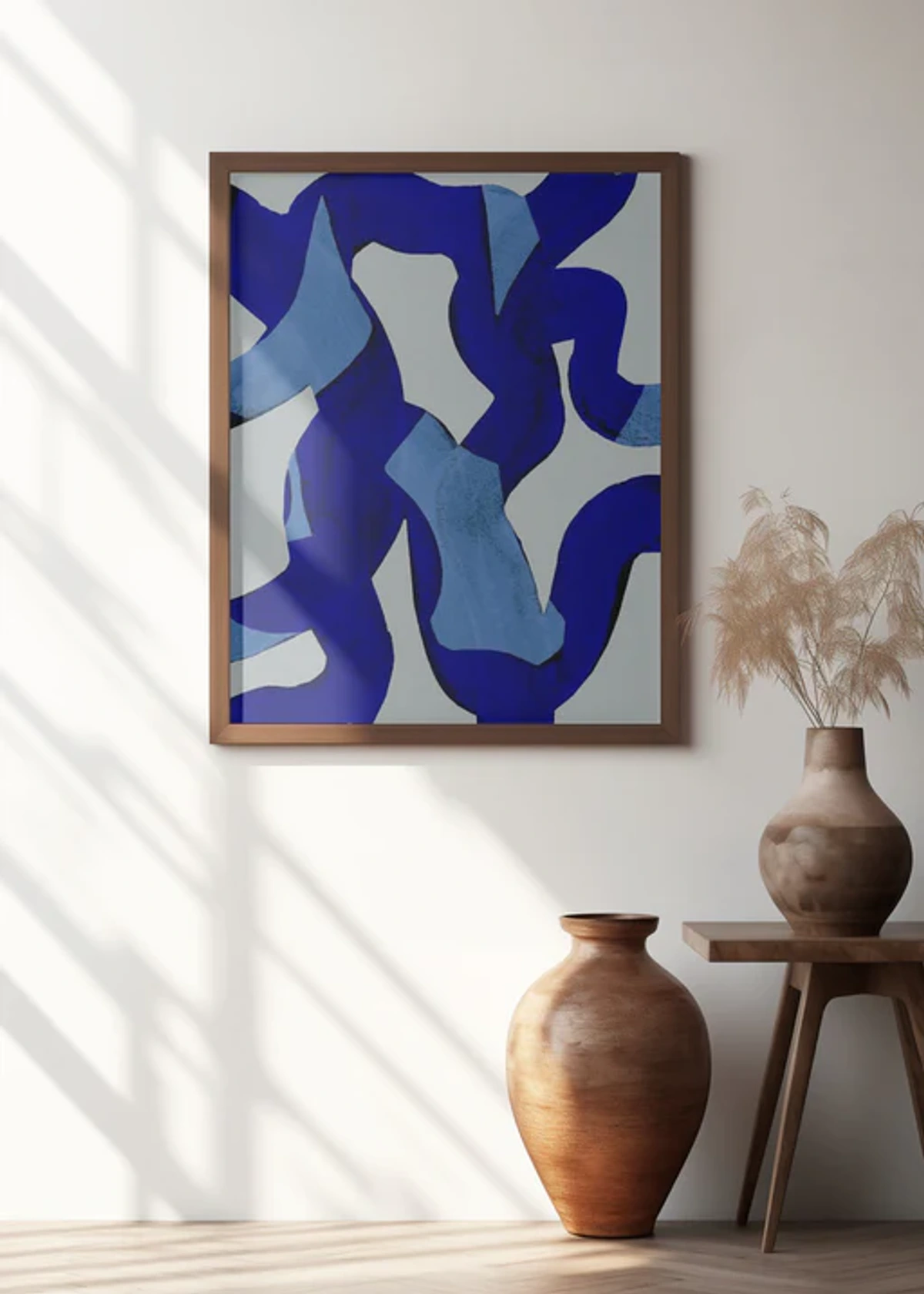
- Condition: This is absolutely critical, especially if you're looking at art on the secondary market. Damage like tears, cracks, fading, or significant restoration can dramatically decrease value. Think of it like a car's mileage and accident history. Pristine condition is always preferred. It's why taking care of your art is so important – not just for potential value, but for its longevity. The conservation history of a piece also matters – has it been professionally restored? Were the methods sound? A history of poor conservation can negatively impact value. For important pieces, a detailed conservation report documenting the artwork's condition and any treatments it has undergone is crucial documentation and adds confidence for buyers. Using conservation-grade materials for framing and professional installation can also help maintain a piece's condition and value over time. Learn about protecting your art: Art Care 101.
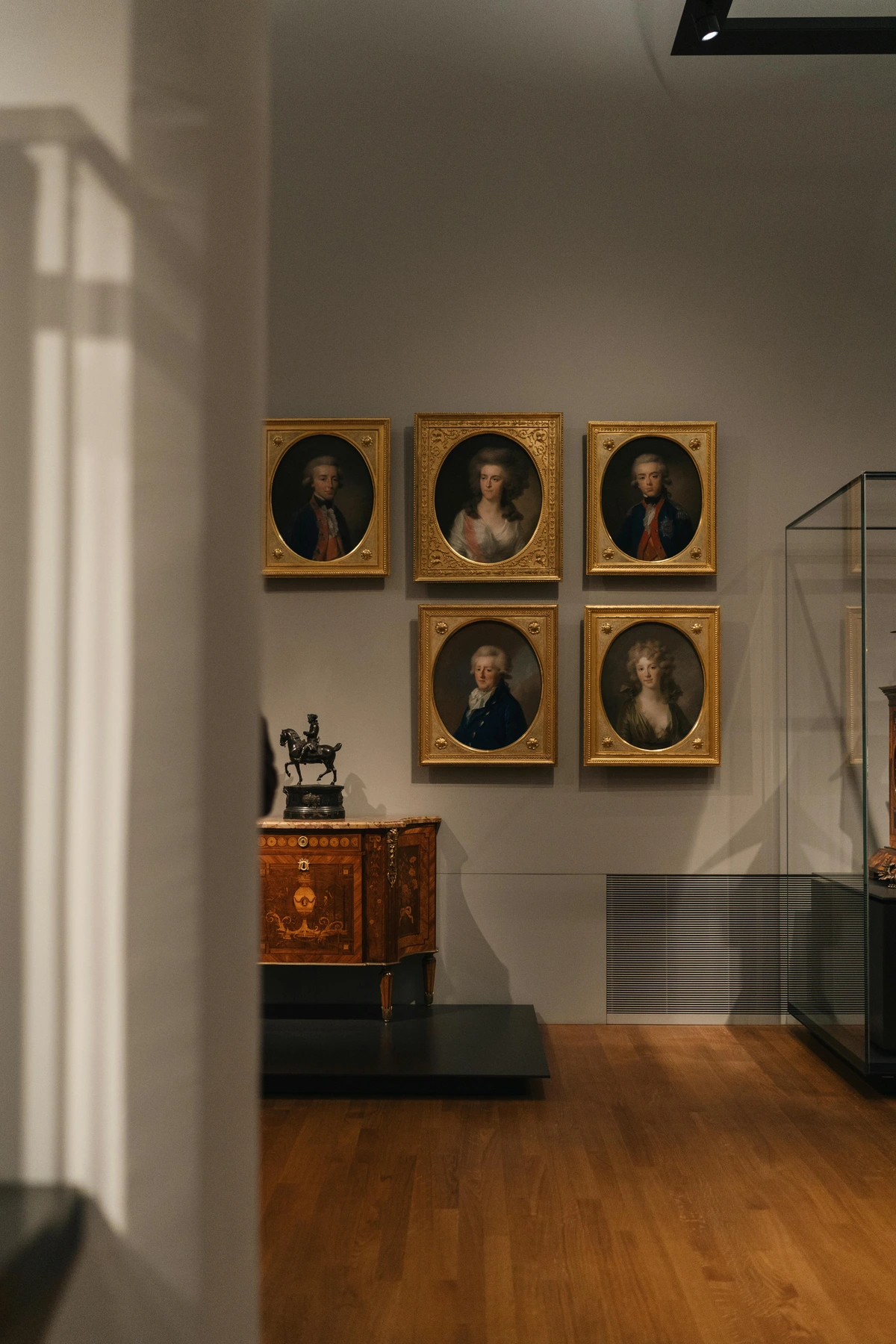
- Rarity & Uniqueness: A one-of-a-kind painting or sculpture is inherently rarer than a print from an edition. For prints, smaller edition sizes generally command higher prices per piece because fewer exist. This is where the concept of supply comes into play again. It's simple scarcity – if there's only one, and someone really wants that one, the price reflects that. Beyond prints, other types of editions exist, like sculpture editions or even variations within an edition like Artist Proofs (APs), which can also influence rarity and price. Learn more about Understanding Limited Edition Prints.
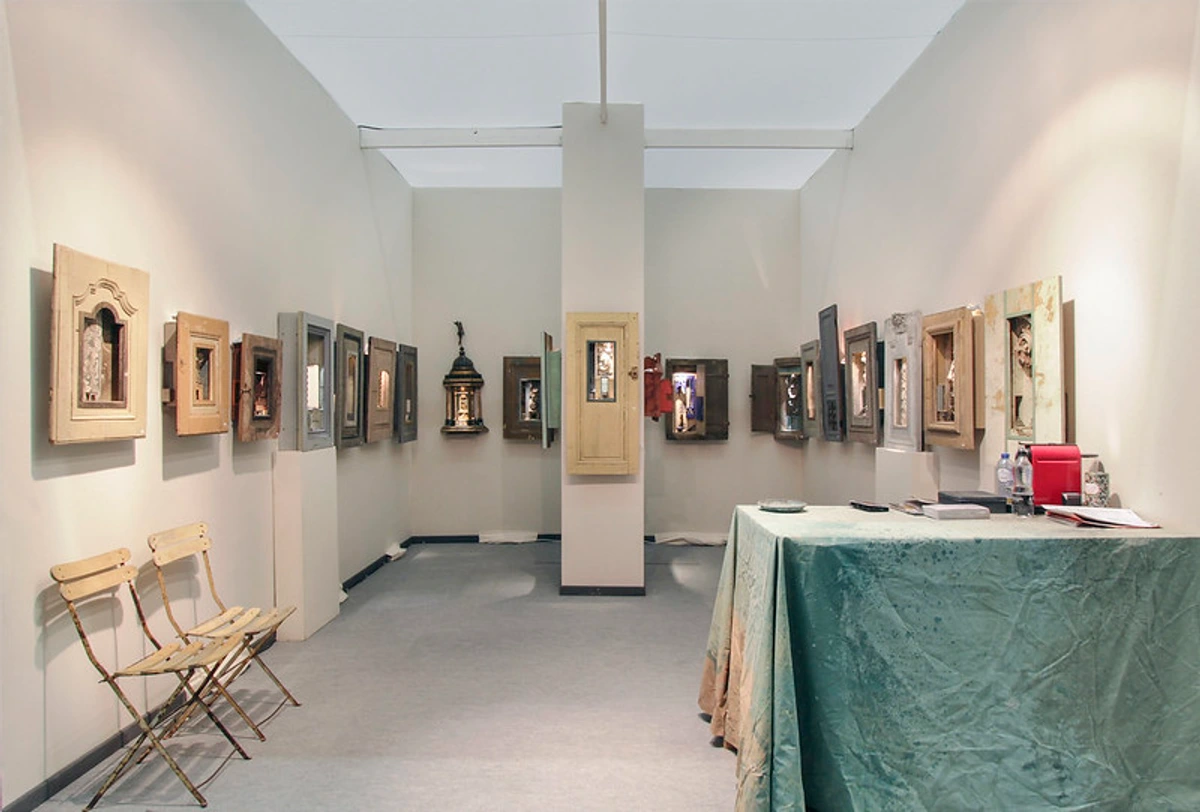
- Subject Matter & Period: Within an artist's entire body of work (their oeuvre, if you want a fancy art word!), certain subjects, themes, or periods might be more iconic, sought-after, or historically significant. A painting from an artist's breakthrough series will likely be more valuable than a sketch from their student days, even if both are technically originals. This is why prices for works by the same artist can vary so much – it's not just size or medium, but when it was made and what it represents within their journey. Market preference for a certain period can be influenced by critical reception, historical narratives, or current trends, not solely the artist's perceived "best" work. It's worth noting, though, that market preference for a certain period doesn't diminish the artistic merit of works from other times in their career. Value here is often about historical narrative and market trends, not necessarily the artist's personal best work.
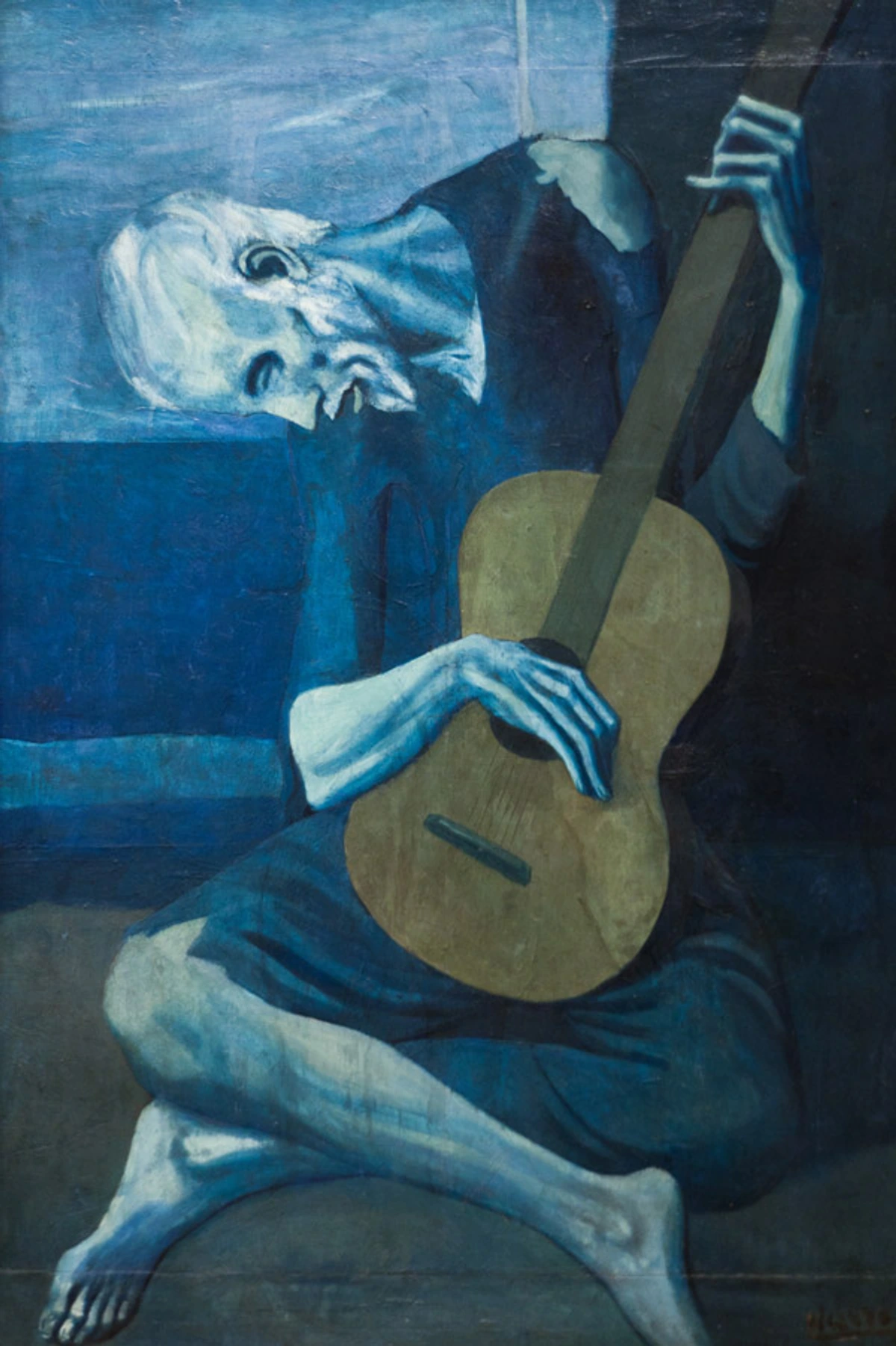
- Historical Significance or Cultural Relevance: Does the artwork connect to a major historical event, a significant cultural movement, or address a pressing social issue? Art that captures the zeitgeist or offers profound commentary can gain significant value beyond its aesthetic qualities. Think of Picasso's Guernica – its value isn't just in the paint on canvas, but its powerful statement against war.
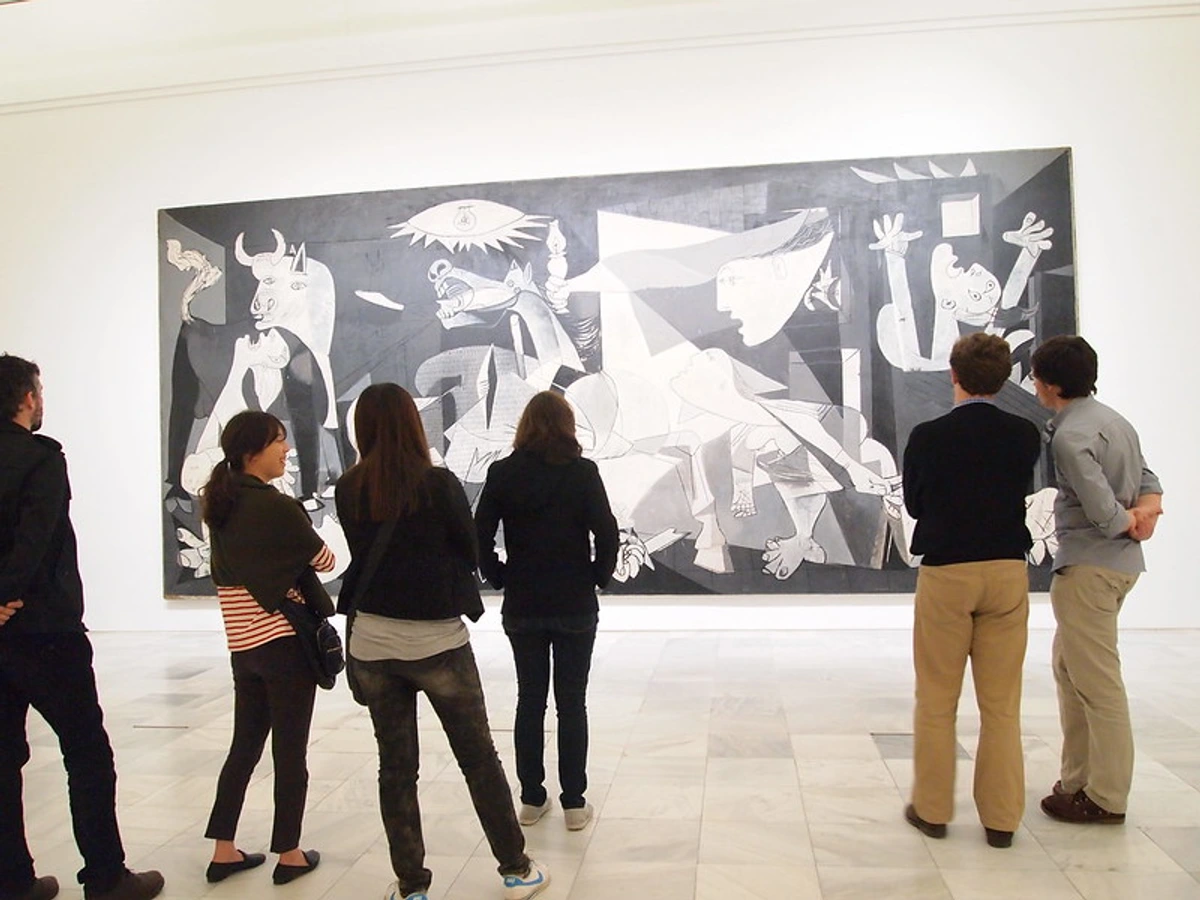
- Provenance: This is basically the artwork's resume, its documented history of ownership. A clear, traceable, and perhaps prestigious provenance (e.g., owned by a famous collector or exhibited in a major museum show) adds value and helps confirm authenticity. It's especially crucial when buying on the secondary market to know where the art has been. It's like a little history lesson attached to the piece. The exhibition history of the artwork itself is a key part of its provenance – if a specific piece has been included in important museum exhibitions or historically significant shows, this adds a layer of prestige and documented importance that increases its value. Provenance is also vital in combating fakes; a documented history from reputable sources makes it much harder for a counterfeit piece to enter the market undetected.

- Signature & Authentication: Is the work signed by the artist? While not always essential (some artists don't sign everything), a signature is often expected. Proper authentication, especially for high-value pieces, is vital to confirm it's genuinely by the artist. You don't want to accidentally buy a very expensive fake, right? For many contemporary works, particularly editions, a Certificate of Authenticity (COA) signed by the artist or their representative is standard practice and an important part of the artwork's documentation.
- Digital Art and NFTs: Pricing for digital art and NFTs introduces unique factors. While artist reputation and the visual work itself still matter, the value is heavily tied to the blockchain technology. Factors include the platform used, the scarcity mechanism (is it a unique 1/1 NFT or part of a larger edition?), the smart contract's terms (royalties for future sales), and the perceived utility or community associated with the NFT. It's a rapidly evolving market with different valuation metrics than physical art.
(C) Market-Related Factors
Beyond the artist and the artwork, the broader art world ecosystem plays a huge role. This is where things can feel most mysterious, and perhaps, a little eccentric. It's the swirling, sometimes unpredictable, environment the art exists within. Here's how the outside world influences the price tag:
- Supply and Demand: We touched on this with the artist, but it applies broadly. If a particular style or type of art becomes highly fashionable (a trend!), and the supply is limited, prices rise. If there's a glut of similar work, prices might stagnate or fall. It's the classic economic dance, but with more champagne and less predictable partners.
- Gallery Representation: On the primary market, the reputation, location, and clientele of the gallery representing the artist significantly influence the pricing structure. A top gallery in a major art hub can command higher prices than a smaller, local one, partly due to their reach, marketing power, and ability to place works in important collections. Pricing for many contemporary artists, including those featured at the Zen Museum Store, often follows structures set in consultation with galleries or based on market standards. It's a partnership, and the gallery's standing adds a layer of market confidence. It's like having a really good agent who knows the ropes.

- Auction Results: Sales results from reputable auction houses provide public benchmarks and heavily influence secondary market pricing. When an artist's work performs well at auction, it sends a signal to the market and can drive up prices for their other works. (Navigating Auctions). It's like the stock market for art, but with gavels. And sometimes, a surprising result can send ripples through the entire market for that artist.
- Art Fairs and Online Platforms: These have become increasingly significant market factors, especially for contemporary artists. Art fairs create intense periods of visibility and sales, influencing demand. Online platforms (like this very website!) make art accessible to a global audience, creating new markets and influencing pricing transparency, particularly for direct sales from the artist. It's opened up the market in exciting ways, letting artists connect directly with buyers, which is pretty cool. It also means you can discover amazing art from anywhere, not just your local gallery scene.

- Market Trends: Certain styles, movements, or artists can become particularly fashionable or sought-after. Trends can emerge through media coverage, collector focus, institutional acquisitions (when museums start buying a certain type of work), or even just buzz. Major art world events like prominent biennials (e.g., Venice Biennale, Documenta) or large-scale museum retrospectives can also significantly contribute to shaping or highlighting specific trends. They can significantly impact prices, though sometimes they can be fleeting – the art world, like any market driven partly by taste, has its fads! From an artist's perspective, trends are... interesting. You see what's popular, and there's a natural pull to engage with it, but you also have to stay true to your own voice. It's a delicate balance, and sometimes the market just decides your style is 'in' or 'out' for a bit, which is wild to watch from the studio.
- Economic Conditions: The overall health of the economy affects discretionary spending, including art purchases. In boom times, the market tends to be stronger; in downturns, it can soften. Art isn't exactly a necessity, is it? So when times are tough, it's often one of the first things people cut back on.
- Art Consultants and Advisors: These professionals play a significant role, guiding collectors on purchases, which can influence demand and perceived value for certain artists or types of work. They often have their finger on the pulse of what's happening in the market and their recommendations can definitely steer collector interest and impact an artist's market trajectory. They're like expert navigators in the art market sea.
- Appraisals and Insurance Value: While often done for practical reasons like insurance or estate planning, formal appraisals by qualified professionals provide an estimate of an artwork's current market value based on comparable sales data and the factors discussed here. This process itself contributes to establishing and documenting a piece's value within the market ecosystem. It's worth noting that the value for insurance might differ slightly from the expected resale value, but appraisals are a key part of the market's valuation process.
How Understanding Prices Helps You (Beyond Just the Money)
Knowing these factors isn't about becoming a ruthless art investor (though you can learn about Art as an Investment if you're curious). It's about feeling more comfortable and informed when you encounter art you love. It takes some of the guesswork out of it.
- Provides Context: You'll understand why a piece might be priced a certain way. Instead of just seeing a number, you see the artist's journey, the materials, the history, and the market buzz behind it.
- Informed Questions: You can ask sellers (galleries, artists, dealers) relevant questions about the artist's background, the artwork's condition, its provenance, and how the price was determined. This shows you're a serious, thoughtful buyer. It's okay to ask! We artists and gallerists appreciate informed questions.
- Better Comparisons: You can more accurately compare prices of similar works by the same artist or by artists at a similar career stage, considering all the relevant factors (medium, size, period, provenance, etc.).
- Realistic Expectations: It helps manage expectations about costs and potential future value. Not all art is an investment, and that's okay! Knowing the market helps you understand what you're buying into. It's not a magic money tree, usually.
- Identifying Undervalued Gems: Understanding the market factors, especially for emerging artists or less mainstream contexts, can help you spot pieces that might be undervalued relative to their artistic merit or future potential. It's like finding a hidden treasure!
- Empowerment: In some contexts (like the secondary market or sometimes with galleries), understanding value can make you feel more empowered to negotiate or to identify potential value that others might overlook. It gives you a little more confidence in the conversation.
Conclusion
So, is art pricing still a bit of a mystery? Maybe a little! The art market, with its blend of passion, prestige, and cold hard cash, can be wonderfully eccentric. But it's certainly not arbitrary. It's a complex equation involving the artist's standing and story, the artwork's unique characteristics and history, and dynamic market forces driven by demand, trends, and the economy. While it can seem daunting, understanding these key factors demystifies the process and empowers you to make more informed decisions.
Ultimately, my hope is that this knowledge helps you feel more confident exploring the art world. Find pieces that resonate with you personally – that's the true, lasting value. Armed with a little understanding of the market context, you can focus on the joy of discovering and living with art you love.
Explore art within a transparent framework at the Zen Museum Store.

Frequently Asked Questions (FAQ)
Okay, let's tackle some of the questions that pop up most often when people think about art prices. It's totally normal to have these! Here are a few more, with a bit of my personal take:
Q1: Why are prints usually cheaper than paintings by the same artist? A: Great question! Paintings are typically unique, one-of-a-kind objects that require significant time, effort, and materials from the artist. Creating a painting is a singular journey for that piece. Prints, on the other hand, are usually produced in multiples (editions). This allows the cost and the artist's time to be spread across several pieces, making each one more accessible. It's a way to share the work with more people at different price points. However, don't mistake accessibility for lack of value – rare or highly sought-after prints by major artists can still be very valuable, sometimes even more than minor original works. See Prints vs. Paintings and Buying Art Prints.
Q2: Does the frame affect the price of an artwork? A: Generally, the listed price is for the artwork itself. While a high-quality, well-chosen frame absolutely enhances presentation and can be a significant added cost, its value isn't usually factored into the artwork's core market value, though it might be included in the final sale price. Sometimes artists or galleries sell works unframed, giving you the choice. Think of it as an important accessory, not the core item's value. Using conservation-grade framing materials and professional installation is crucial for preserving the artwork's condition over time, which does impact its long-term value. A damaged piece, even if the damage is due to poor framing, will be worth less. See our Framing Guide.
Q3: How much does gallery commission add to the price? A: Galleries typically take a commission (often around 50%) on primary market sales. This isn't usually "added" on top of a price the artist would set for themselves; rather, the listed price reflects an amount that covers both the artist's share (typically the other 50%) and the gallery's commission. The commission supports the gallery's overhead (rent, staff, insurance), marketing efforts, and their work promoting the artist's career. It's part of the cost of doing business in that market. From my side, the gallery partnership is invaluable – they have the expertise, the space, and the network that allows me to focus on making the work. The commission is what makes that partnership possible.
Q4: Why can prices for works by the same artist vary so much? A: Ah, the nuances! Variations are due to a combination of factors we discussed: differences in size, medium (a painting vs. a drawing vs. a print), condition, rarity (is it unique or from an edition?), the specific period it was created (was it from a key, sought-after series?), the subject matter (is it an iconic image or a less typical one?), and provenance (including its exhibition history). Market preference for a certain period or subject can be influenced by critical reception, historical narratives, or current trends. Think of Artist X: a small 8x10 inch sketch from their early student days might be priced very differently (maybe $500) compared to a 48x60 inch painting from their acclaimed 'Blue Period' that was exhibited in a major museum ($50,000+). Every piece has its own story and market context.
Q5: Is more expensive art always "better" art? A: Absolutely, unequivocally NOT! This is perhaps the most important takeaway, and something I feel strongly about. Price reflects market factors and perceived value within that market, not necessarily intrinsic artistic merit or your personal connection to the work. "Better" is subjective and deeply personal. Many incredible, moving, and thought-provoking artworks are affordable, and some very expensive art might leave you cold. Trust your own taste and emotional response above all else. The value to you is what truly matters. Don't let a price tag tell you what to like. Your connection to a piece is priceless.
Q6: How do artists decide their initial prices? A: This varies hugely! For me, and many artists, it starts with practicalities: the cost of materials, the time spent (which can be hard to quantify!), and studio overheads. Then, we look at our experience level, our exhibition history, and what similar artists at a comparable career stage are charging. Using a price-per-square-inch formula can be a starting point, but it's adjusted based on the specific piece's complexity and impact. If we work with a gallery, they provide crucial guidance based on their market knowledge. It's a mix of covering costs, valuing our time and skill, and positioning ourselves within the market. It's a bit of educated guesswork, honestly, especially early on. It's a constant learning process.
Q7: Does buying directly from the artist affect the price? A: Sometimes, yes. When you buy directly from an artist (like through their website or studio), the price might be slightly lower than buying the exact same piece from a gallery, because the gallery commission isn't factored in. However, artists often maintain consistent pricing across their channels to be fair to their galleries and collectors. Buying direct is a wonderful way to connect with the artist and support them fully, regardless of a small price difference. Plus, you get to meet the person who made the thing you love! It's a more personal transaction.
Q8: How do appraisals relate to market value? A: Appraisals are formal estimates of an artwork's value, usually done by a qualified professional for purposes like insurance, estate planning, or potential resale. Appraisers consider many of the factors we've discussed (artist, medium, condition, provenance, market trends, recent sales data, especially auction results) to arrive at a value. An appraisal reflects the current market value based on available information, but it's still an estimate, and the actual price realized in a sale can vary. They're a snapshot in time, useful for documentation and insurance, but not a guarantee of future value or a prediction of what someone will pay tomorrow.
Q9: What about other costs when buying art? A: Good point! The price tag isn't always the final number. Depending on where you buy and what you buy, you might also need to factor in costs like shipping and handling (especially for large or international pieces – this can be significant!), insurance during transit, and potentially installation costs for complex works. If you're buying from a gallery or online platform, they can usually give you estimates for these. Don't forget framing costs if the piece isn't sold framed! Professional installation is also recommended for larger or heavier pieces to ensure safety and proper display, which is another potential cost. And depending on your location and the seller's, you might also need to factor in sales tax or VAT.
Q10: How is the price determined for a custom commission? A: Ah, commissions! This is a special case, a truly collaborative process. Pricing for a custom piece usually involves a conversation between the artist and the client. Factors include the size and complexity of the requested work, the materials needed (which can be significant for large or unusual commissions), the estimated time the artist will spend on it, and the artist's current pricing structure for their standard work. Client input and revisions can also influence the final cost. It's a bespoke piece, and the price reflects that unique creation process and the artist's dedicated time just for you. See our guide on Commissioning Art.
Q11: What is a Certificate of Authenticity (COA) and why is it important? A: A Certificate of Authenticity (COA) is a document that verifies the artwork is genuine and created by the artist. It typically includes details like the artist's name, title of the work, date of creation, medium, dimensions, and edition size (if applicable). For limited editions, it might also include the specific number of the piece within the edition. A COA is crucial for provenance and resale value, especially in the secondary market. It provides buyers with confidence in the artwork's legitimacy. Always ask for one when purchasing original art or limited editions.
Q12: What is a Conservation Report and why is it important? A: A Conservation Report is a detailed document prepared by a professional art conservator. It describes the artwork's current condition, notes any existing damage or signs of wear, and outlines any past or recommended future conservation treatments. For collectors, especially when buying on the secondary market, a conservation report provides transparency about the artwork's physical history and helps assess its long-term stability and value. It's a key piece of documentation, alongside provenance and a COA.
Q13: How do major art world events affect prices? A: Events like the Venice Biennale, Documenta, or major international art fairs (like Art Basel, Frieze) are huge platforms. When an artist is selected to participate in a prestigious biennial or has a significant presence at a major fair, it dramatically increases their visibility and critical attention. This exposure can lead to new collectors, positive reviews, and institutional interest, all of which can significantly boost demand and, consequently, prices for their work in the market.
Q14: How do Art Consultants and Advisors influence prices? A: Art consultants and advisors work closely with collectors, guiding their purchasing decisions. They often have deep market knowledge and relationships with galleries and artists. When a respected advisor recommends an artist or a specific piece, it can significantly influence a collector's decision and contribute to increased demand for that artist's work. Their expertise and network can help validate an artist's market and steer collector interest, impacting prices, especially for emerging and mid-career artists.
Q15: How is digital art or NFTs priced differently? A: Pricing for digital art and NFTs involves factors beyond the traditional art market. While the artist's reputation and the visual appeal are still relevant, the value is fundamentally linked to its existence on the blockchain. Key factors include the perceived scarcity (is it a unique 1/1 or part of a large edition?), the platform it's sold on, the terms embedded in the smart contract (like artist royalties on resales), and any associated utility (e.g., access to exclusive content or communities). It's a speculative market influenced by tech trends and collector interest in the digital asset itself, not just the image.




